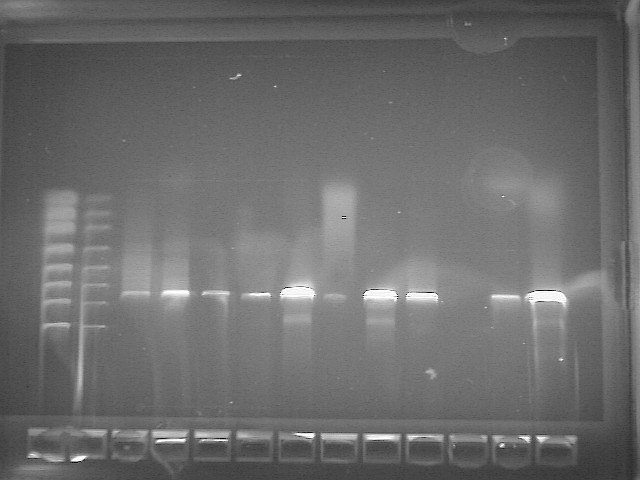Bacillus Subtilis Soil Project
Classification
Domain; Phylum; Class; Order; family [Others may be used. Use NCBI link to find]
Domain: Bacteria Phylum: Firmicutes Class: Bacilli Order: Bacillales Family: Bacillaceae
Species
|
NCBI: Taxonomy |
Bacillus subtilis
Habitat Information
Description of location and conditions under which the organism was isolated:
Date: 1.25.2018
Temperature: 58° F
Recent rainfall: 0 inches
Depth: Surface to 2”
Grid coordinates: 30.20144°, -97.88822°
Soil type number and name from NRCS soil map:
Name: Volente silty clay loom, 1 to 8 percent slopes
Unit key and symbol: 39325833, f66r
Description: The location the organism was isolated was a grassy field between a soccer field, parking lot, and children’s playground. There was full sun, little traffic near the area, and used often by local residents from the suburban area.
Description and Significance
Describe the appearance (colonial and cellular), possible antimicrobial activity etc. of the organism, and why the organism might be significant.
Genome Structure
Describe the size and content of the genome. How many chromosomes? Circular or linear? Other interesting features? What is known about its sequence? Include S Ribosomal sequence that you obtained from PCR and sequencing here.
The organism has 4215606 base pairs. Its chromosome is circular.
The PCR imaging results for our class is below. Our bacteria's DNA was run in well #5.
HMN1-Forward_A06.ab1 937 letters, trimmed about 40 b/p
TTGNNGCGTANGGGCTCGCAGGCGGTTTCTTAAGTCTGATGTGAAAGCCCCCGGCTCAACCGGGGAGGGTCATTGGAAACTGGGGAACTTGAGTGCAGAAGAGGAGAGTGGAAT TCCACGTGTAGCGGTGAAATGCGTAGAGATGTGGAGGAACACCAGTGGCGAAGGCGACTCTCTGGTCTGTAACTGACGCTGAGGAGCGAAAGCGTGGGGAGCGAACAGGATTAG ATACCCTGGTAGTCCACGCCGTAAACGATGAGTGCTAAGTGTTAGGGGGTTTCCGCCCCTTAGTGCTGCAGCTAACGCATTAAGCACTCCGCCTGGGGAGTACGGTCGCAAGAC TGAAACTCAAAGGAATTGACGGGGGCCCGCACAAGCGGTGGAGCATGTGGTTTAATTCGAAGCAACGCGAAGAACCTTACCAGGTCTTGACATCCTCTGACAATCCTAGAGATA GGACGTCCCCTTCGGGGGCAGAGTGACAGGTGGTGCATGGTTGTCGTCAGCTCGTGTCGTGAGATGTTGGGTTAAGTCCCGCAACGAGCGCAACCCTTGATCTTAGTTGCCAGC ATTCAGTTGGGCACTCTAAGGTGACTGCCGGTGACAAACCGGAGGAAGGTGGGGATGACGTCAAATCATCATGCCCCTTATGACCTGGGCTACACACGTGCTACAATGGACAGA ACAAAGGGCAGCGAAACCGCGAGGTTAAGCCAATCCCACAAATCTGTTCTCAGTTCGGATCGCAGTCTGCAACTCGACTGCGTGAAGCTGGAATCGCTAGTAATCGCGGATCAG CATGCCGCGGTGAATACGTTCCCGGGCCTTGTACACACCGCCCGTCACACCACGAGAGTTTGTAACACCCGAAGTCGGTGAGGTAACCTTTTAGGAGCCAGCCGCCGAANGTGG GACAGATGATTGGGGTGAANTCGTA
HMN2-Reverse_B06.ab1 936 letters, trimmed about 20 b/p TCGGNGGNTGGCTCCTAAAAGGTTACCTCACCGACTTCGGGTGTTACAAACTCTCGTGGTGTGACGGGCGGTGTGTACAAGGCCCGGGAACGTATTCACCGCGGCATGCTGATC CGCGATTACTAGCGATTCCAGCTTCACGCAGTCGAGTTGCAGACTGCGATCCGAACTGAGAACAGATTTGTGGGATTGGCTTAACCTCGCGGTTTCGCTGCCCTTTGTTCTGTC CATTGTAGCACGTGTGTAGCCCAGGTCATAAGGGGCATGATGATTTGACGTCATCCCCACCTTCCTCCGGTTTGTCACCGGCAGTCACCTTAGAGTGCCCAACTGAATGCTGGC AACTAAGATCAAGGGTTGCGCTCGTTGCGGGACTTAACCCAACATCTCACGACACGAGCTGACGACAACCATGCACCACCTGTCACTCTGCCCCCGAAGGGGACGTCCTATCTC TAGGATTGTCAGAGGATGTCAAGACCTGGTAAGGTTCTTCGCGTTGCTTCGAATTAAACCACATGCTCCACCGCTTGTGCGGGCCCCCGTCAATTCCTTTGAGTTTCAGTCTTG CGACCGTACTCCCCAGGCGGAGTGCTTAATGCGTTAGCTGCAGCACTAAGGGGCGGAAACCCCCTAACACTTAGCACTCATCGTTTACGGCGTGGACTACCAGGGTATCTAAT
Cell Structure, Metabolism and Life Cycle
Interesting features of cell structure; how it gains energy; what important molecules it produces. B. subtilis is a rod-shaped bacterium arranged in either single cells, small clumps, or short chains. Its cell wall consists of a thick peptidoglycan layer. B. subtilis is apart of the kingdom Bacteria, which means this organism has a single circular chromosome within the nucleoid region of its cytoplasm. B. subtilis has a helical cytoskeleton composed of a single protein. ()
B. subtilis is a motile organism through use of its flagella, which is a whip-like appendage used for movement. Specifically, B. subtilis has peritrichous flagella, meaning has flagella projecting in all directions around the cell. ()
B. subtilis exhibits endospore formation. Endospores are dormant durable structures often created from a vegetative cell in response to nutrient deprivation are produced through the process sporulation. During this process, a thick layer of peptidoglycan and spore coat form around a copy of the cell’s DNA and part of the cytoplasm. This allows the bacteria to survive under harsh conditions such as high temperatures, chemical damage, etc. This is so the chromosome can be protected within and then, and the bacteria genetic material is not harmed. () Another important note of B. subtilis producing endospores is this means it cannot readily be killed by many antimicrobial treatments.
In terms of obtaining energy, Bacillus subtilis is classified as facultative anaerobe, meaning can live with or without oxygen. This bacterium can produce ATP through nitrate ammonification or fermentation. During nitrate ammonification, nitrate is eventually reduced to ammonia by the respiratory nitrite reductase. This bacterium can use nitrite or nitrate to be used as a terminal electron acceptor. During anaerobic fermentation, carbon sources are transformed by pyruvate and end products include lactate, acetoin, 2,3-butanediol, ethanol, acetate, and succinate. NAD+ regeneration utilizes the enzyme lactate dehydrogenase and this enzyme also converts pyruvate into lactate. These processes produce different ATP yields, and B. subtilis compensates for this imbalance by using a specific regulatory system that allows for the most efficient ATP production. According to research, not all of the parts of this regulatory system are known. ()
Industrial sectors often use B. subtilis because of the production of important production of hyaluronic acids, specifically proteases. Proteases are enzymes frequently used in detergents, pharmaceuticals, food and agricultures industries around the world. New technology is even being created in order to meet the demand for this protease-producing bacterium. Also according to studies, b. subtilis is free of endotoxins and exotoxins, which generally recognizes it as safe (GRAS). This makes B. subtilis more favorable in being used in food production over some gram-negative bacteria’s. ()
Physiology and Pathogenesis
Biochemical characteristics, enzymes made, other characteristics that may be used to identify the organism; contributions to environment (if any). If relevant, how does this organism cause disease? Human, animal, plant hosts? Virulence factors, as well as patient symptoms.
Bacillus Subtilis is a gram positive, rod shaped organism that can be found growing in soil as well as the gastrointestinal tract of humans. The microrganisim B. Subtilis tested positive for catalase, lipase, and amylase. Uses citrate as its sole carbon source also positive for carbohydrate fermentation. B. Subtilis is considered non-pathogenic or toxic and does not cause any disease, it can be found in the gastrointestinal tract of humans but this is very rare. Many studies have been conducted by the FDA and each concluded that Bacillus Subtilis and other microorganism derived are considered safe.
References
Author
Page authored by _____, student of Prof. Kristine Hollingsworth at Austin Community College.

